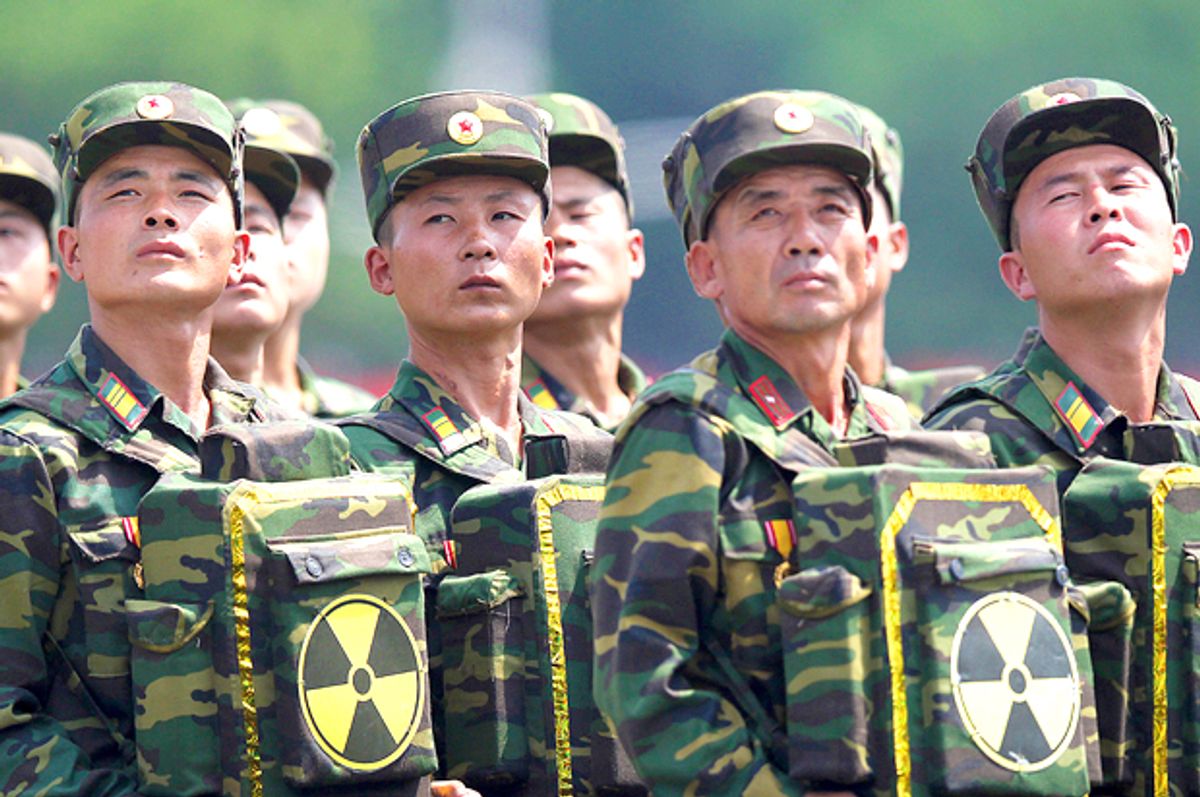President Donald Trump is considering a military strike against North Korea that his advisers hope, somehow, wouldn't lead to war.
It's called the "bloody nose" strategy, and it's based off of the idea that if America launched a limited military strike against North Korea — say, by attacking one of their facilities — they could deter North Korea from further provocative behavior without sparking a full-fledged war, according to The Wall Street Journal. The risk here is that, if North Korea does retaliate after such a strike, anywhere between tens of thousands and millions of South Koreans would die — as well as a significant number of Americans.
Trump's approach — called "Twitter diplomacy" by some, has been panned. Jamie Fly, a foreign policy expert with the German Marshall Fund told Salon in November that the Trump administration's approach has been "ramping up the pressure" on North Korea. But whether or not it will bear fruit is a different story, he said.
National Security Adviser H. R. McMaster is the main proponent of military options for dealing with North Korea within the Trump White House. But there's another wing — led by Secretary of State Rex Tillerson and Secretary of Defense James Mattis — that has urged the president to continue with diplomatic approaches toward resolving the conflict. One of the main variables making it difficult for the Trump administration to decide on a final policy is the president's own habit of going off script and engaging in provocations himself. As a foreign policy expert told the Journal, Trump's tweet about having a bigger nuclear button that Kim Jong-un was the equivalent of "waving a red flag before a bull."
The talks of striking North Korea are occurring even though that country has recently opened dialogue with South Korea for the first time in two years, according to the BBC. This included an announcement that North Korea would send a team of athletes, cheerleaders and officials to the upcoming Winter Olympics in Pyeongchang.



Shares